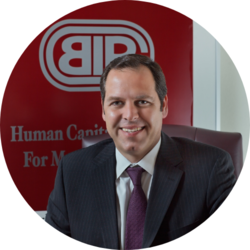
Each part must synchronize perfectly in a precision engine to achieve maximum efficiency and power output. Similarly, in a high-performing business team, each member is an important piece of the “engine” that must perform at the peak of their abilities for the company to increase efficiency and reach its goals. Here, we’ll discuss the art of shaping a team that surpasses expectations and achieves long-term success.
Building the Right Team Composition
The first step in building a high-performing team is strategically choosing its members, who will work together to create a textured mosaic of skills, experiences, and perspectives. This diversity is essential for innovation and sophisticated problem-solving, as it prevents ‘groupthink,’ fosters creativity, and fast-tracks the discovery of fresh solutions. Gianna Driver, Chief Human Resources Officer at Exabeam, recommends seeking culture “adds,” not culture “fits” when vetting prospective employees. You “don’t want new employees to fit into [y]our existing culture merely,” she says. “[You] want them to bring something new and unique to the table” (Forbes). In the process of team assembly, you shouldn’t only assess individual capabilities and gauge each person’s ability to blend their complementary skills for a balanced and productive dynamic.
Defining Roles and Responsibilities
While the best teams can work cross-functionally to a certain extent, it’s still important for every team member to clearly understand his or her unique role in your company’s precision engine. The crankshaft (COO), pistons (Sales and Marketing), and fuel pump (CFO) may have vastly different functions, but all are needed right where they are. Well-defined roles and responsibilities prevent overlapping duties and confusion, which allows the team to work cohesively toward achieving their goals (Ninety). This clarity streamlines operations and interoffice communication; everyone knows who to turn to for different answers.
Forming a Trusting and Inclusive Culture
A high-performing team grows best in a fertile soil of trust, respect, and open communication (Inc.com). Firmly establish a culture that allows team members to share their thoughts and concerns without fear of judgment and engage in team-building exercises and open discussions to strengthen this culture. In doing so, you’ll encourage collaboration and joint problem-solving. As a bonus, your organization will develop a reputation as a great workplace and become even more attractive to top-tier talent (Beehive).
Leadership’s Role
Leadership’s role in effective team building might not be what you think. The old idea that “working harder = better results” has faded. In reality, pushing too hard often leads to burnout rather than better performance. However, for some reason, many managers still stick to tough, outdated motivational tactics, expecting unreasonably long work hours while only offering minimal support for well-being (Harvard Business Review). This approach can create a stressful work environment where employees feel stuck and unable to speak up about these unrealistic expectations. Research shows that leaders who work toward reducing their employees’ stress and focus on a more balanced workload achieve better results.
Continuous Learning and Development
Commitment to ongoing training and development maintains a team’s competence and competitive edge. A culture that values learning weaves continuous improvement into the team’s fabric. As professional certification training platform Simplilearn asserts, “This commitment to growth ensures [teams] remain adaptable and can maintain high performance even as conditions change (Simplilearn).
Performance Management and Feedback
Robust performance management systems effectively track progress and pinpoint areas for improvement. Regular, constructive performance reviews are integral to holding team members accountable and offering helpful feedback that promotes growth. These evaluations should be fair and clear, encouraging team members to improve themselves and align their work with the team’s goals.
Recognition and Reward
Acknowledging and rewarding team members’ contributions improves their productivity and satisfaction. Financial incentives are common (and always appreciated), but non-monetary rewards like public recognition, opportunities for career advancement, or flexible working conditions can be equally—possibly even more—motivating. Customizing these rewards to correspond with team members’ specific contributions and achievements can inspire them even more.
Curating a diverse team, clearly defining roles, and committing to continuous development are pivotal strategies for advancing your company. These elements synchronize your team’s efforts, ensuring seamless and efficient operations. By fostering a collaborative environment, they drive innovation and ensure long-term success.
As leaders, you are the driving force that continuously adjusts and refines the team, enabling them to tackle challenges and prepare for future ones. You maintain smooth operations by promoting a culture of trust, setting realistic expectations, valuing personal and professional growth, and rewarding hard work. A high-performing team excels, innovates, and sets industry standards. With these strategies, your team will continue to deliver exceptional performance.

By Fernando Ortiz-Barbachano
President & CEO of Barbachano International
Barbachano International (BIP) is the premier executive search and leadership advisory firm in the Americas with a focus on diversity & multicultural target markets. Since 1992, BIP and its affiliates have impacted the profitability of over 50% of Fortune 500 Companies. BIP has been recognized by Forbes as Americas’ Best Executive Search Firms and currently ranks #10 and #3 on the West Coast.

